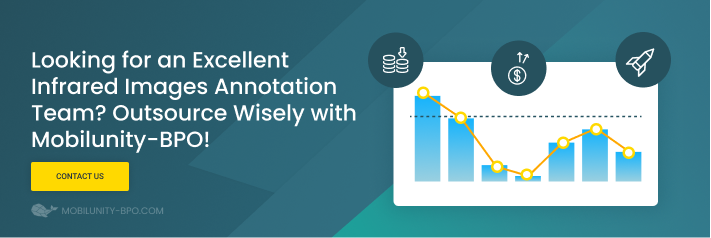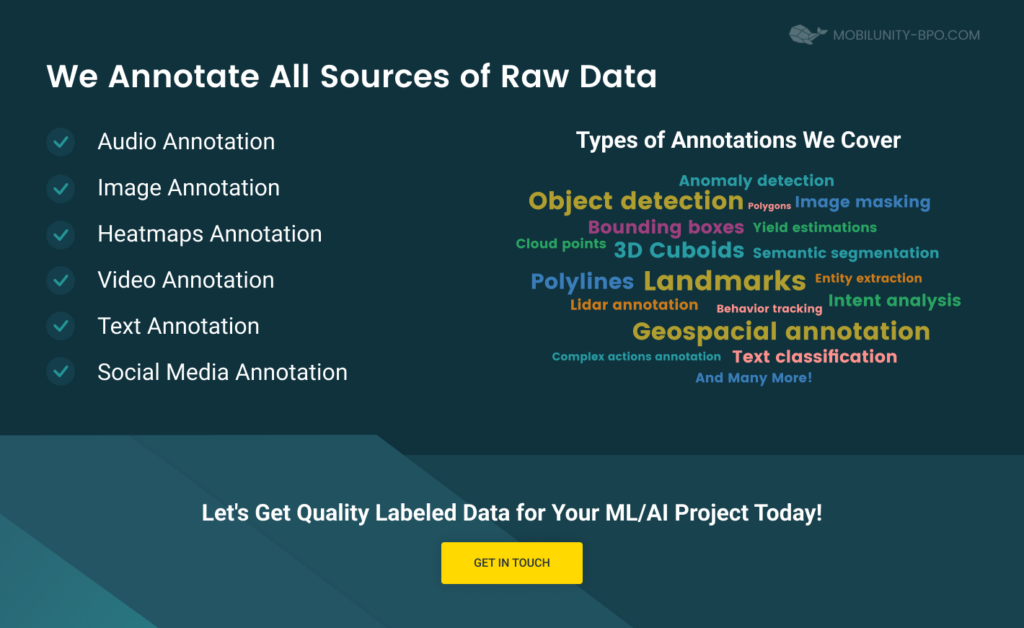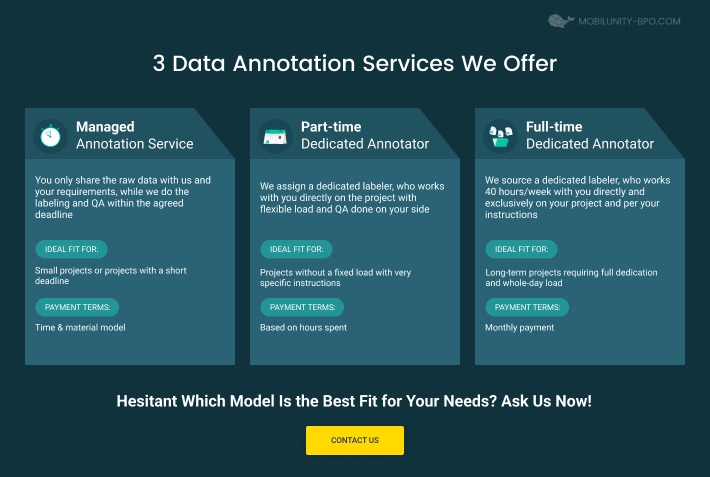Specifics of Thermal Images and Heatmap Annotation
Thermal imaging and heatmap annotation have existed for quite some time. But with the rise of Artificial Intelligence and Deep Learning, this technology has acquired new opportunities.
Nowadays, AI-assisted data annotation allows automatically detecting of objects on heatmaps. AI is incredibly powerful when it comes to reading and interpreting signals that cannot be otherwise accessed by humans. This includes electromagnetic radiation, infrasounds, and ultrasounds. This makes thermal image object detection significantly more precise and efficient.
In this guide, we’ll define the potential that thermal object detection, Machine Learning, and AI hold together. Heat vision cameras are used in a variety of fields from agriculture and healthcare to emergency evacuations and rescue missions.
Application Cases for Heatmap Annotation
Infrared images and object detection heatmap solutions can be used in a variety of cases. The main goal is to visualize signals/information that is not visible to the human eye. For example, reading thermal images allows identifying various objects in poor visibility conditions. A rescue mission dealing with a smoky fire scenario can use thermal drone annotation to locate survivors.
Other usage cases include:
- Farming;
- Construction;
- Electrical sector;
- Plumbing;
- Animal and pest management;
- Healthcare;
- Science and Research;
- IoT systems;
- Fire-fighting;
- Transport navigation;
- Ecology and wildlife preservation;
- Military purposes;
- Law enforcement purposes.
Overall, thermal infrared imaging can detect humans, animals, buildings, rocks, engines, vehicles, liquids, leaks, gas, etc. And in comparison to RGB cameras, infrared ones give more privacy to people as they cannot be easily identified here. At the same time, infrared cameras and night annotations are perfect for ventilation and air conditioning systems or quality assurance in manufacturing.
Specifics of Thermal Image Annotation
One of the biggest challenges when it comes to thermal video semantic segmentation and heatmap annotation is the necessity to prepare a huge amount of data to train such an AI-based system. To perform to its best, a deep learning network needs to access millions of already annotated near infrared images.
There are no ready-to-use 3d thermal imaging datasets out there. So every project that works on a deep learning system needs to create its own dataset of such imagery. These images need to be annotated correctly to train the system to detect and recognize objects later.
The creation of such datasets requires a team of humans to manually annotate thermal anomalies and infrared images. But, how can one ensure the right initial dataset for such an elaborate task?
This video provides insight into the crucial role of service providers in advising and guiding the selection of the initial dataset for annotation, ensuring the efficacy of the AI system’s performance later on.
Types of Data Annotation for Thermal Object Detection
Specialists that work with heatmap annotation and nighttime image interpretation label different areas based on the temperature. They mark specific areas based on various types of data annotation derived from the shapes used. These are:
- Lines and splines (using curves and lines);
- Bounding boxes (2D or 3D boxes around objects);
- Tracking for movement across many frames;
- Polygonal segmentation (used for irregular shapes);
- Landmark annotation (used not only for landscapes but for facial traits, gestures, or poses for facial recognition).
As for types of classification and segmentation used for annotations for night, there are:
- Image classification;
- Object detection;
- Segmentation (semantic, instance, or panoptic).
Benefits of Outsourcing Annotations for Night Images
Outsourcing semantic segmentation services is a great opportunity when it comes to thermal image object detection and the preparation of huge datasets of annotated imagery. The main advantages of outsourcing night images data annotation are:
- Reduction of costs. Outsourcing is very cost-efficient as the salary rates in other countries are lower. Also, project-based cooperation and flexible schedule allow for saving a decent part of a budget.
- Productivity. Working with specialists means better quality of work, higher performance, and faster delivery. There is no need to train employees as they are already experienced in the annotation.
- You get more time to focus on the core of your business instead of taking resources to thermal image annotation.
- Faster project delivery. As everyone works on their respective area of responsibility, every specialist is able to perform better, faster, and easier. This ensures faster and smoother delivery;
- Usage of latest methods and technologies. Agencies and individuals that work with thermal image annotation offer access to the latest technology and innovations in the field.
Mobilunity-BPO Is Your Partner in Heatmap Annotation
Mobilunity-BPO is a long-standing provider of thermal object detection and annotation services. We have more than a decade of experience when it comes to providing excellent services to businesses all over the world. Our team is ready to find and recruit the best specialists in the field for your specific requirements.
We have more than 40 clients all over the world and 1000+ finished projects. Some of our partners are 42 Matters, Minedia, Codename, Chip In, Vayomar, and Opportunity Network.
Heatmap Annotation Services We Offer:
- Managed thermal image annotation. You tell us all the requirements and the project scope and we deliver annotation and QA by the deadline. Ideal for short and relatively small projects. Payment is issued based on time and material model.
- Part-time annotation. We recruit a part-time specialist for your project that is working directly with your team. The QA happens on your side and the workload is flexible. This is perfect for bigger projects with particular requirements and unfixed scopes. Payment is issued based on hours worked.
- Full-time dedicated expert. Our team finds the best expert for you to work solely on your project 40 hours a week. You are in full control of the workload and instructions. This model is perfect for continuous cooperation, long-term projects, and big scopes. Payment is issued as a monthly salary.




